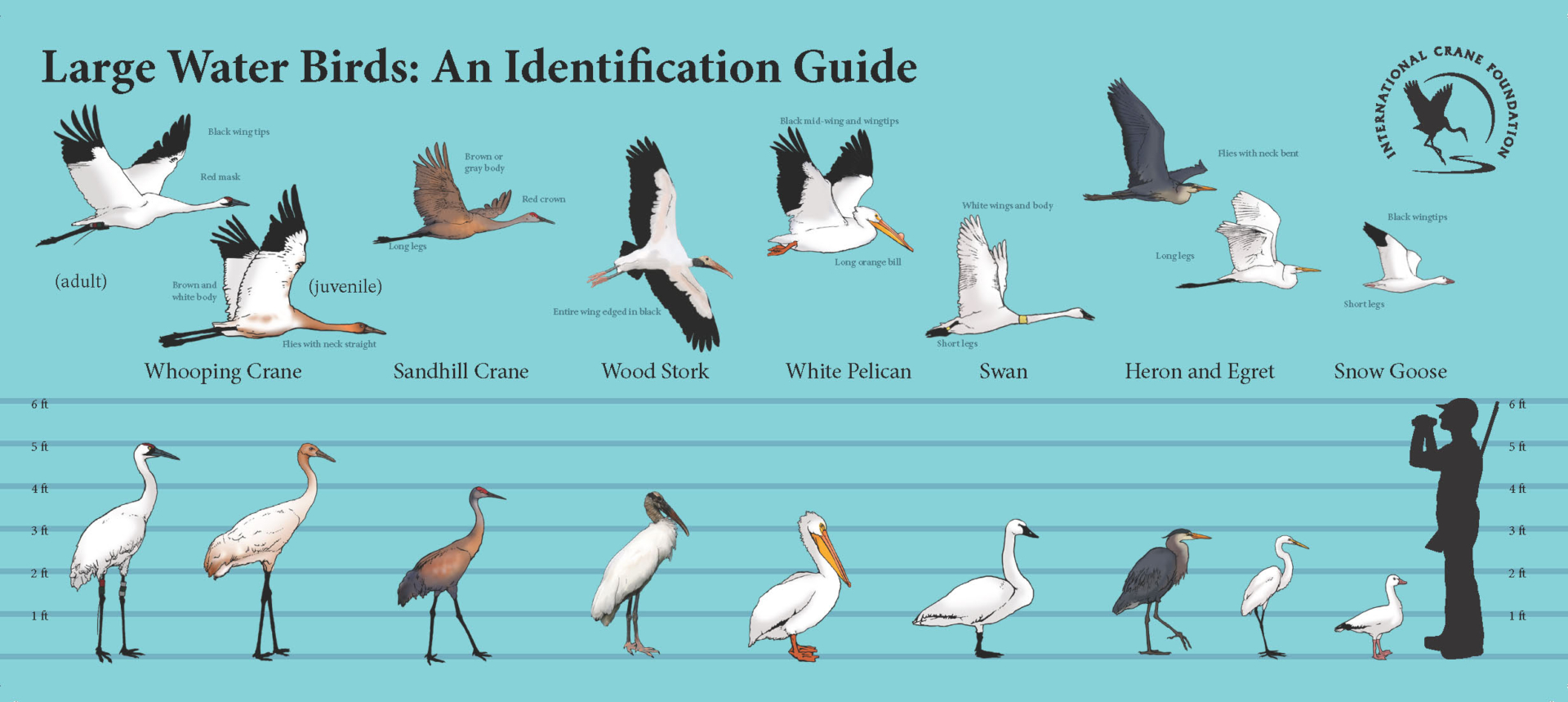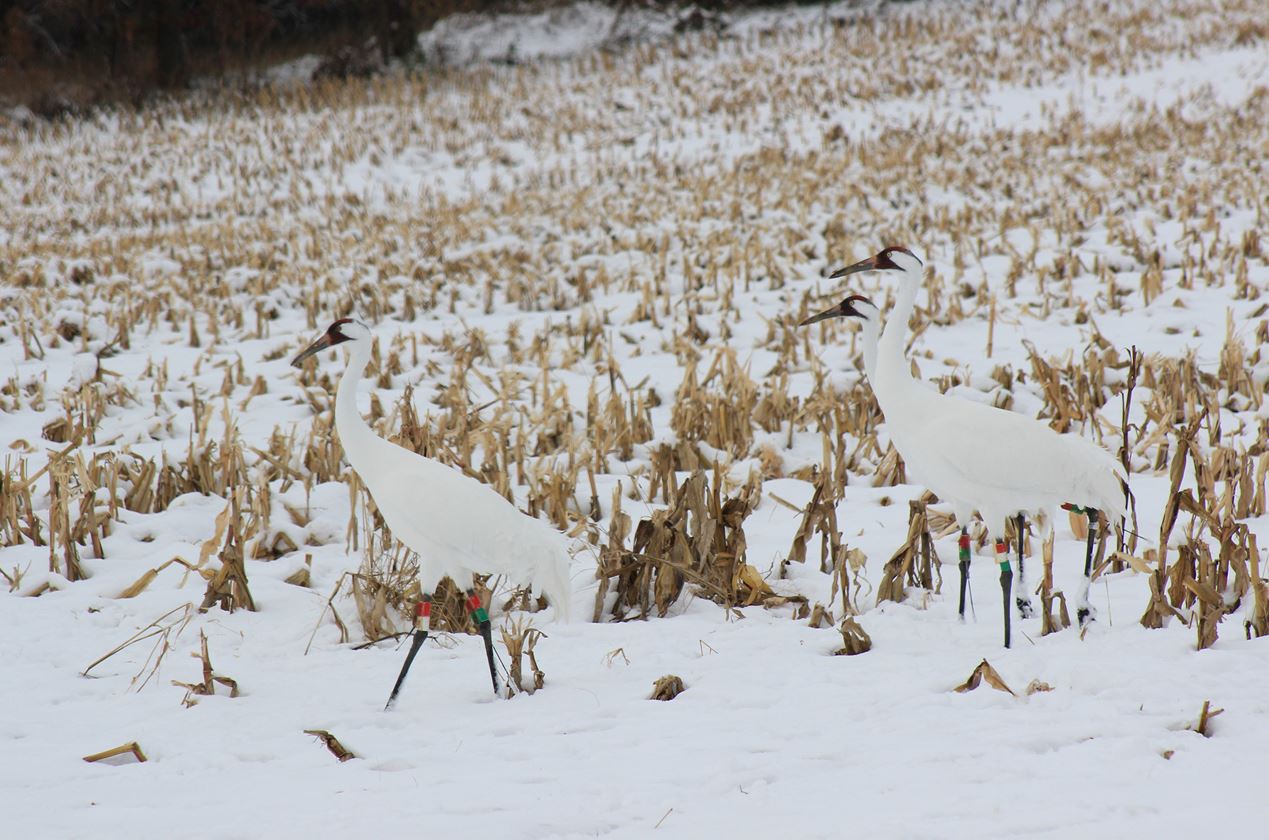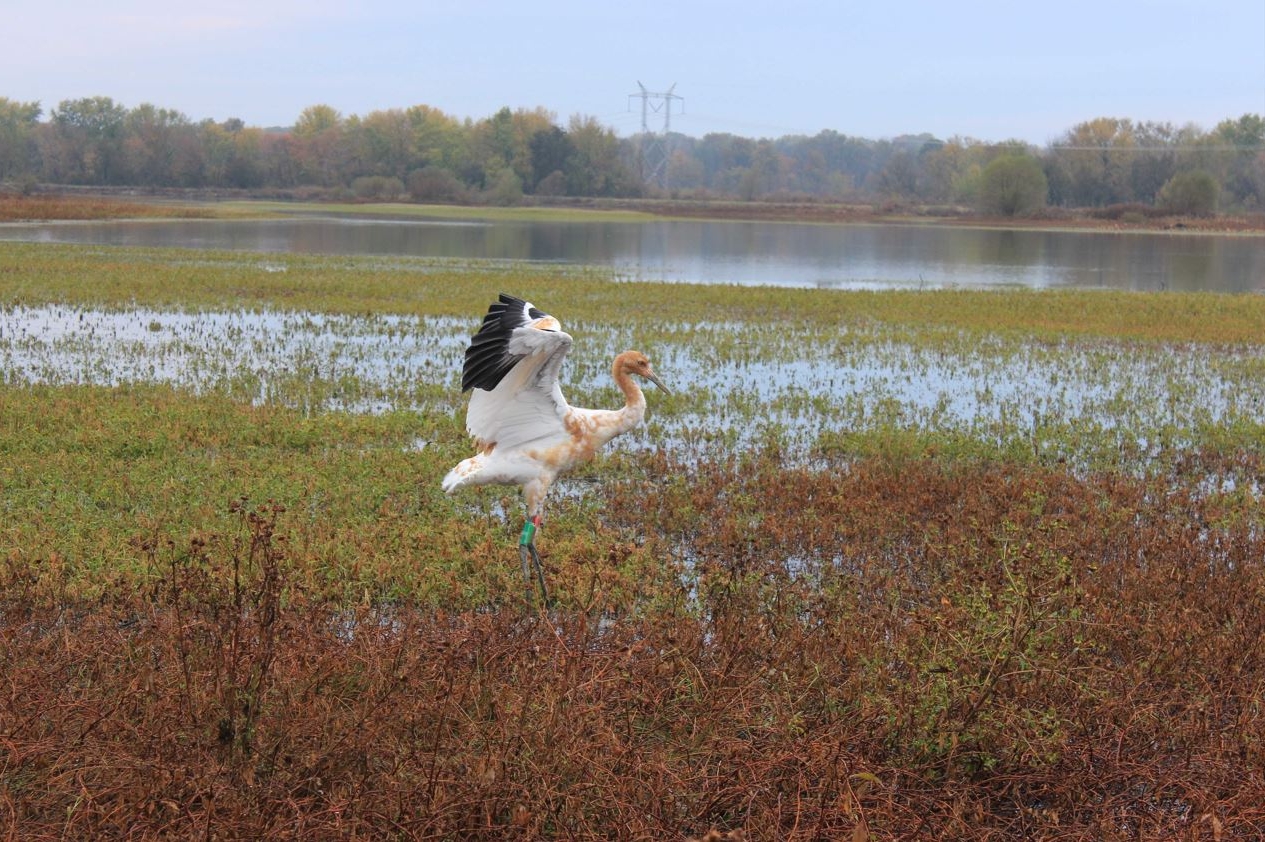Indiana’s Whooping Cranes: A Brief History and Call to Action
By Stephanie M. Schmidt, Whooping Crane Outreach Coordinator for the International Crane Foundation
Editor’s Note: ABAS has supported the International Crane Foundation’s efforts in Indiana with grants totaling $75,000 in 2017, 2018, 2019, and 2022.
From October through March Indiana is home to one of the rarest and most endangered birds in North America, the Whooping Crane. The Whooping Crane with its long black legs stands 5 feet tall, has white feathers throughout its body and long neck, and sports a featherless red patch on the crown of its head, and a black mustache-like mask on the sides of its face. When in flight the Whooping Crane will spread its impressive 8-foot wingspan to display prominent black feathers at its wing tips.
In the early 1800s, Indiana and surrounding regions contained acres of fertile wetland and prairie habitat, a contrast to the predominantly agrarian landscape we see today. At this time, around 10,000 Whooping Cranes would have used this habitat and occupied a massive range from the arctic to central Mexico and spanning the majority of the United States and Canada. However, by the 1940’s Whooping Cranes reached near extinction when only 20 remained in a single population that migrated between Wood Buffalo National Park in Canada and Aransas National Wildlife Refuge in Texas. This near extinction was largely driven by four factors: unregulated hunting, egg collecting, the millinery trade, and massive habitat loss and degradation.
Today, due to increased conservation efforts by the International Crane Foundation and our partners as well as robust legal protections, there are now over 650 Whooping Cranes in the wild. However, it wasn’t until 2001 that Whooping Cranes returned to Indiana when the Eastern Migratory Population flyway was established. Around 80 Whooping Cranes make up this small but growing reintroduced population today, and many will spend their winter months in western Indiana.
Whooping Cranes in Indiana are largely found in and around Jasper-Pulaski Fish and Wildlife Area and Goose Pond Fish and Wildlife Area. These spaces are attractive to Whooping Cranes because they offer abundant wetland habitat for foraging and roosting and are heavily used by the numerous Sandhill Cranes who also winter in Indiana. Whooping Cranes will often mingle with flocks of Sandhill Cranes during migration and throughout the winter, so when observing flocks of Sandhill Cranes in Indiana, keep your eye out for a flash of white plumage – you may just spot a Whooping Crane!

On their wintering grounds in Indiana, Whooping Cranes, unfortunately, face numerous threats that inhibit their population’s growth. The International Crane Foundation is dedicated to safeguarding the future of Whooping Cranes in North America, and we are vigilant in our efforts to mitigate these threats in Indiana. Around Jasper-Pulaski Fish and Wildlife Area, Whooping Cranes are increasingly impacted by losses to their habitat and increased collision risks due to the development of large green energy projects. For the health of our planet, ecosystems, and people, green energy has become critically important. However, there are concerns about the proximity of these developing projects to vital Whooping Crane wintering habitat and the resulting impacts.
An additional and unfortunate threat to Whooping Cranes in Indiana is the threat of poaching. The International Crane Foundation has been addressing this threat, with the support of the ABAS, through community outreach and education in the spaces Whooping Cranes live. In these spaces, we are engaging with students, community members, outdoor recreationists, birders, hunters, naturalists, and more to share with them the history of Whooping Cranes and the work the International Crane Foundation and our partners are doing to bring Whooping Cranes back to North America while encouraging community members to safely look for Whooping Cranes and be our eyes and ears on the ground for reporting poaching of Whooping Cranes. Last year alone, International Crane Foundation staff engaged with over 3,500 people in Indiana at festivals, hunter draws, school programs, and more. The International Crane Foundation has also partnered with Purdue University since 2018 to study community attitudes towards Whooping Cranes to better inform our outreach efforts and effectively safeguard the future of Whooping Cranes in Indiana.
To ensure that Whooping Cranes remain a significant part of the Indiana landscape for the many years to come they need your help. Fortunately, there are many ways you can protect Whooping Cranes in Indiana, including the following:
- Safely look for Whooping Cranes in Indiana. Remember to stay at least 2 football fields away from Whooping Cranes at all times to reduce any unnecessary disturbances.
- Respect the spaces Whooping Cranes live. Keep wetlands free of litter, support wetland protections, stay on the trail, respect private property, and only park in designated parking areas.
- Report any poaching or harassment of Whooping Cranes to 1-800-847-4367.
- Report banded Whooping Cranes to bandedcranes.org.
- Talk to your friends and family about Whooping Cranes and wetlands in Indiana.
- Head to our website savingcranes.org to learn more about cranes.
- Celebrate Whooping Cranes at Goose Pond’s annual Marsh Madness Festival, scheduled for February 25th, 2023 friendsofgoosepond.org/marsh-madness/.
All images courtesy of the International Crane Foundation.


